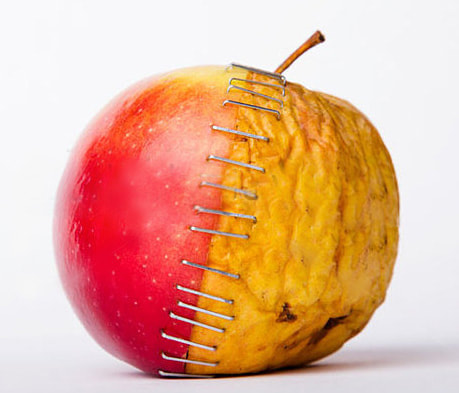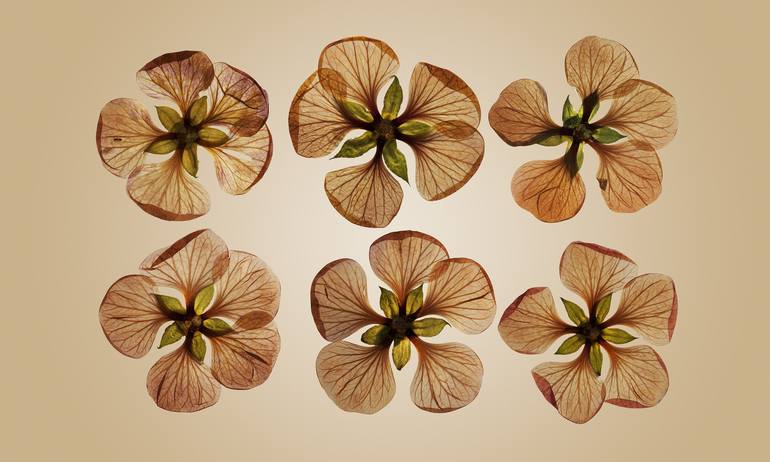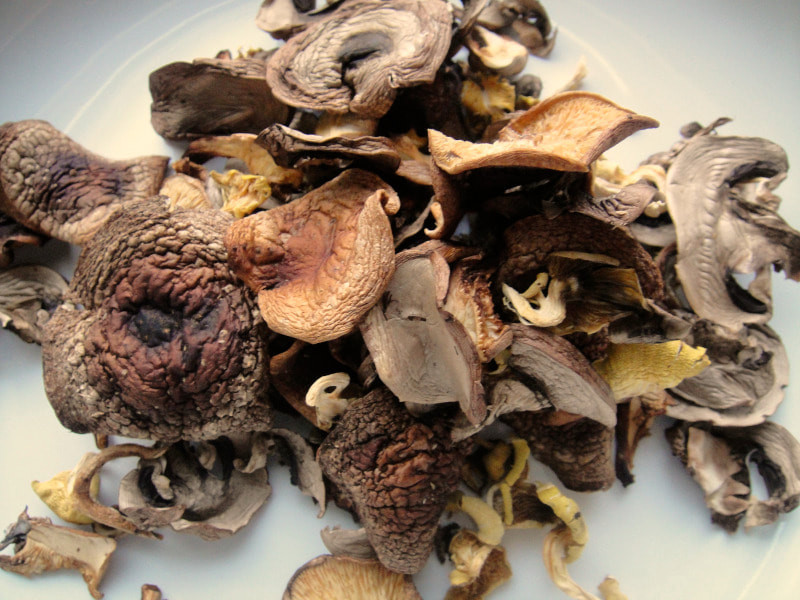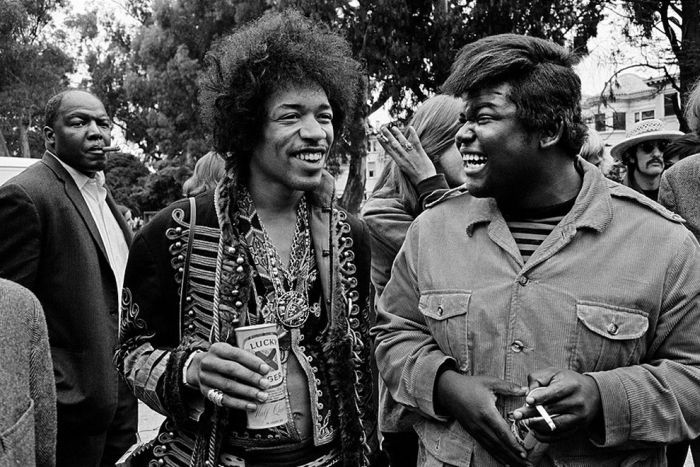n
“I would add, that the exact mechanisms of chemical oxidation of wine are still not completely understood, and there are multiple theories to explain the chemistry at this point. This is a somewhat controversial field.”
Wine as a living thing is never static in the bottle. The alcohol and acids react together constantly to form new compounds while other compounds dissolve. These changes happen over time and at different rates. No surprise that every time a bottle is opened the wine inside is at a different stage in its evolution.
There are no hard or fast answers to the wine aging question. However, we in the industry need to be able to understand the general changes that tend to take place in wine as it ages in regards to the way it looks, smells, tastes, and even feels on the palate. Further, we need to able to communicate these changes to our customers/clients/guests in such a way as to be easily understandable and avoid putting them into a deep trance.
This post is an attempt to do just that. For the consumer, this post will provide some information about what tends to happen in wine as it ages. Notice the emphasis on the word tends. For the sommelier or other industry professional, I’ve included some suggested language to use when describing an older wine to a guest or consumer so as not to confuse or intimidate. Finally, I’ve included some FAQ’s on wine and aging. Onward.
How Wine Tends to Change with Age
Color
Most reading this post will already know that white and blush wines grow darker in color as they age, while red wines do the opposite—they get lighter in color because pigments and tannin precipitate out of solution. Over time the color in wine will change to show oxidation in various ways, and the color intensity will usually diminish as well. The following changes in color generally apply.
White wines: Straw and pale-yellow color in a young wine vs. deeper yellow, gold, and even amber in an older wine.
Pink wines: Various shades of pink in a young rosé vs. salmon and orange in an older wine.
Red wines: Vibrant ruby or purple in a young wine vs. various shades of garnet or garnet-brown in an older wine.
Aromas and Flavors
Fruit: Generally, young wine offers more overt primary fruit aromas and flavors vs. an aged wine. After a time, wine will also show less primary fruit with secondary (even tertiary) non-fruit and earth-mineral aromas and tending to dominate. It’s also fairly easy to recognize two or more distinct kinds of fruit in a young wine but difficult in an older wine where the fruit has melded together.
Fruit quality: Fresh, vibrant fruit in a young wine vs. dried, stewed, compoted, or raisinated fruit in an older wine.
Non-fruit floral: Fresh flowers and blossoms in a young wine vs. dried flowers, pressed flowers, or potpourri in an older wine.
Non-fruit herbal: Fresh green herbs in a young wine vs. dried herbs in an older wine.
Non-fruit spice (either pepper-spice or oak spice): Fresh spices in a young wine vs. dried spices in an older wine.
Earth-mineral: Wines with age show more pronounced earth and mineral character simply because the decreased intensity of fruit and non-fruit elements.
Oak: Overt vanilla and spice character in a young wine with new oak vs. dried, less distinct spice in an older wine. Also, less overall overt oak presence.
Important! Note the pattern here. Over time practically everything in a wine regarding aroma and flavor goes from fresh to dry. Thus it doesn’t make sense to describe a wine as having dried fruit and fresh herb notes. An aged wine will show dried fruit, dried herb notes, and less overt oak if any was used in the winemaking process.
Structure
How does our perception of the structural element in wine change as it ages? What are the reasons for the change vs. the wine simply smelling and tasting different? The answer involves a myriad of factors.
Residual sugar: The level of measurable residual sugar in wine does not change with age. However, over time certain molecules and aldehydes form new combinations that can change our perception of sweetness, making an older wine tastes drier.
Acidity: Once bottled, the level of acidity in a wine remains almost constant with age. However, our perception of acidity in a wine changes over time for various reasons. In white wine with residual sugar, the level of acidity can seem higher after considerable aging because our perception of the level of sweetness is less. Likewise, a high acid red wine seems more acidic with age because there’s less overall fruit.
Alcohol: After fermentation the alcohol level in a wine remains the same. However, as phenolic compounds link together and the wine’s primary flavors fade with age, there may be times during a wine’s development when the alcohol will seem more or less pronounced.
Tannin: Tannins found in grape skins and seeds taste bitter and feel astringent on the palate. Over time, tannins soften because they polymerize, or form long chains with each other. The tannin polymer molecules taste less bitter and feel less harsh compared to those in a younger wine. Also, some of the tannins will precipitate out of the wine as sediment with age making it smoother–for lack of a better term–on the palate.
Given all the above, here are examples of certain wines and how they tend to change over time. As previously noted, all are general tendencies.
Vintage Champagne
Young Wine
Sight: Pale straw color with hints of green and a persistent bead (bubbles).
Nose and Palate: Tart vibrant apple-pear and citrus fruit, floral, autolytic notes (from the breakdown of yeast left from secondary fermentation) of yeast, toast, brioche, and possible earth-mineral notes.
Aged Wine
Sight: Brassy straw in color and less persistent bead.
Nose and Palate: Dried orchard and citrus fruit, dried floral, more pronounced toasty autolytic character, and more pronounced earth-mushroom-mineral character.
Riesling – Mosel Spätlese
Young Wine
Sight: Pale straw color with green.
Nose and Palate: A myriad of fresh vibrant fruit including green apple, stone fruit, tropical fruit, and sweet/tart citrus fruit. Also, fresh citrus blossom, possible lees character (yeast); slate mineral, and little, if any, TDN/petrol character.
Aged Wine
Sight: Yellow gold in color with hints of green.
Nose and Palate: Less fruit overall and the fruit quality is dried/preserved. Also, dried floral, crystalized honey, more pronounced slate mineral quality, and more TDN/petrol character.
Chardonnay – California
Young Wine
Sight: Light yellow in color with hint of green.
Nose and Palate: Fresh and ripe apple-pear, tropical, and citrus fruit with lees notes (yeast, bread dough, etc.), butter from malolactic fermentation/conversion, and pronounced vanilla-spice notes from new oak usage.
Aged Wine
Sight: Yellow-gold in color.
Nose and Palate: Dried, stewed, or compoted fruit including apple-pear and citrus with less distinct lees, butterscotch, and spice character from oak influence. Also, oxidative notes such as honey and roasted nuts.
Chardonnay – Cote de Beaune
Young Wine
Sight: Straw-yellow in color with green.
Nose and Palate: Fresh and ripe apple-pear and citrus fruit with lees (yeast, bread dough, etc.), butter from malolactic fermentation/conversion, possible matchstick-mercaptan-SO2 notes, mineral-earth notes, and vanilla spice from oak.
Aged Wine
Sight: Yellow-gold in color.
Nose and Palate: Dried, stewed, or compoted fruit including apple and preserved citrus with less distinct lees, butterscotch, more pronounced mineral-mushroom-earth notes, and any matchstick-SO2 integrated into the wine. Also, less overt oak influence but with honey and roasted nut oxidative notes.
Pinot Noir – New World
Young Wine
Sight: Medium ruby color with pink hue.
Nose and Palate: Bright, fresh red fruit (red cherry, cranberry, and strawberry) with fresh rose floral, green herb, and oak spices.
Aged Wine
Sight: Garnet-ruby in color with secondary lighter garnet hue.
Nose and Palate: Dried-compoted red fruit, dried floral and herb, possible tertiary mineral and earth notes, and less spice from oak.
Pinot Noir – Red Burgundy
Young Wine
Sight: Medium ruby color with pink hue.
Nose and Palate: Bright, fresh red fruit (red cherry, cranberry, and strawberry) with rose floral, green herb/tea, possible green stemmy notes, mineral-earth, and vanilla-spice from oak.
Aged Wine
Sight: Garnet-ruby in color with secondary lighter garnet hue.
Nose and Palate: Dried, desiccated red fruit with dried floral, herb, tea, stems, and pronounced mineral-earth notes including game, truffle, and mushroom. Also, less spice and overt oak influence. Note that a fine aged red Burgundy often displays complexities on the nose and palate that are almost impossible to describe.
Syrah – Barossa Shiraz
Young Wine
Sight: Opaque ruby purple in color.
Nose and Palate: Ripe, jammy black fruit (blackberry, cherry, and plum), tart red fruit (cherry and cranberry), and dried fruit (raisin, prune, date, and fig). Also, black pepper spice, savory herb, mint and eucalyptus, savory notes (soy and beef jerky), and pronounced vanilla-spice from new oak.
Aged Wine:
Sight: Deep purple with garnet hue.
Nose and Palate: Dried raisinated character overall with riper and tarter elements. Also, dried pepper, leather, mint, herbs, dried savory spice and meat, and less pronounced oak.
Syrah – Northern Rhone
Young Wine
Sight: Deep purple in color.
Nose and Palate: Ripe and tart black fruit (blackberry, cherry, and plum), tart red fruit (cherry and cranberry), and dried fruit (date and fig). Also black and/or white pepper spice, fresh floral, green herb, savory notes (soy, jerky, iodine, and blood), mineral-earth, and oak notes including smoke, toast, and spice.
Aged Wine
Sight: Faded purple-garnet in color.
Nose and Palate: Dried raisinated fruit character overall with riper and tarter notes. Also, dried pepper, dried floral and herbs, dried savory spice, savory meaty character, pronounced mineral-earth-mushroom, and less overt oak notes. Like aged red Burgundy, a top-quality Syrah from Cornas, Hermitage, or Cote Rotie can show remarkable complexity over time that defies description.
Cabernet Sauvignon – California
Young Wine
Sight: Opaque ruby purple in color.
Nose and Palate: Ripe, jammy, and concentrated black fruit and raisinated fruit with violet floral, green herb, and pronounced new oak notes including vanilla, spices, toast, and more.
Aged Wine
Sight: Deep ruby garnet in color.
Nose and Palate: Dried black and raisinated fruit with dried floral, dried herb, cedar, graphite, and less oak influence.
Cabernet Sauvignon Blend – Bordeaux
Young Wine
Sight: Opaque ruby in color.
Nose and Palate: Concentrated, vibrant black fruit (cherry, berry, currant, and plum) and tart red fruit (cherry and currant) with violet floral, green herb-vegetal, mineral-earth notes, and vanilla-spice from oak.
Aged Wine
Sight: Deep ruby garnet in color.
Nose and Palate: Dried, stewed, and compoted black and red fruit with dried floral, dried herb-vegetal, more pronounced mushroom-earth-mineral, and less spice and oak influence.
Botrytis Sweet Semillon Blend – Bordeaux
Young Wine
Sight: Deep straw-yellow in color.
Nose and Palate: Candied ripe stone fruit (peach, apricot, and nectarine), sweet citrus (orange, Mandarin, and tangerine) with honeysuckle floral, honey, mineral-earth, and pronounced new oak character with vanilla and spice.
Aged Wine
Sight: Deep burnished gold in color.
Nose and Palate: Dried, crystalized stone fruit and preserved sweet citrus fruit and citrus peel with dried floral and pronounced botrytis notes including dried honey, saffron, and marmalade. Also, pronounced mushroom and dark earth character with less overt oak spice notes.
Describing wine is never easy. There’s no inherent vocabulary for it and we in the industry have long been guilty of shamelessly pilfering terms from other unrelated fields. There’s also the curious inverse ratio of experience vs. subjectivity as in, the more experience with tasting, the less subjective wine is. Thus to a beginner the wine experience is almost completely subjective, while to someone with years or even decades of experience tasting is almost completely objective. This makes describing an older wine to a curious novice challenging at best. Language really matters when it comes describing an older bottle. Here are some suggested dos and don’ts for speaking the language of an older wine, as well as a couple terms that usually need explaining.
Descriptors to use: dried, jammy, candied, preserved, and savory. Also–and these may require explanation–integrated, married, and melded.
Descriptors to avoid: oxidized, faded, musty, dank, dying, and generally anything that can easily be associated with “old.”
Terms that need explanation:
Bottle bouquet: the aromas of a wine with age as in all the above.
Vinous: the qualities of a red wine with age as in dried fruit, dried herbs and spices, leather, earth, and integrated oak.
Wine Aging FAQ’s
Over the years I’ve been asked many questions about wine and aging. Here are some of the most common ones and my answers.
Does old wine taste better than young wine?
The answer depends completely on you. If you’re familiar with the character of an aged wine, then odds are you’ll like the subtlety and complexity notes of an older bottle. If that’s not the case then you will probably be put off by the dried and earthy notes in an older wine.
What does old wine taste like?
See above: lots of notes on older wines and how they differ from younger vintages.
Does aroma decrease with age?
The answer is generally no. However, the intensity of aroma in certain wines may seem perceptibly less because the aromatics have evolved to such a great extent.
Anything to know about pairing an older wine with food?
Good question! The overt primary flavors of a young wine can handle much more intensity in a dish such as using garlic or onions, or cooking techniques such as grilling. Not so with an older wine. Subtlety in the dish and letting the wine take center stage are the keys. A strongly flavored dish can bury the complex flavors of an older wine. Be mindful of balance!
Is an old wine worth the extra cost?
The answer again depends on you. Older wine will always make it more expensive because someone had to initially buy it and then store it. If you like older wine and have the disposable income, the extra cost may be worth it.
Should I order old wine in a restaurant?
If a celebratory occasion calls for it, by all means yes—but with a caveat. The restaurant in question must have a good wine program with a well-established cellar and a dedicated buyer/sommelier. If you are going to spend the big bucks for an older bottle in a restaurant it’s not unreasonable to ask how the bottle was acquired, how long the restaurant has owned it, and how it’s been stored. All are reasonable questions that any sommelier/buyer should be able to answer.
Do all wines age?
Yes, all wines age–as in, eventually becoming oxidized and ultimately vinegar. However, some wines take far more time than others to go through the aging process. Most go through the evolution quickly within a year or two.
What wines age best?
Top quality sweet wines, fortified sweet wines, and certain red wines tend to age the best and/or longest.
Are aged wines better than un-aged wines?
Context is important here. Who is to say that a bottle of just-released Prosecco enjoyed with the woman/man of your dreams during a beautiful sunset isn’t every bit as amazing and memorable as an uber expensive bottle of 20-year-old Chateau Latour enjoyed in some formal dining room? Note the difference here between a great wine experience vs. a great wine. Both are relevant.
What are the best conditions to age wine?
Great question–and a very important one as well. Proper conditions for cellaring wine are a constant temperature of between 55-60 degrees with a minimum of 60% humidity, and no source of light or vibration. A constant, cool temperature and darkness are key.
When should I drink my bottle?
This is a short question with a very long answer. As the wise Inigo Montoya once said, “Too long. Let me sum up.” The following variables come into play:
- Wine type: What kind of wine is it? Something just purchased at Albertson’s with a plastic cork that’s meant to be opened and enjoyed now and over the next several months? Or a quality bottle that has the capability to age? The price you paid for the bottle will also be an important clue. Less money equals a wine that’s intended to be enjoyed near term and not aged.
- Storage conditions: If you don’t have a place with the right conditions to store wine long term all bets are off. Drink your bottle soon as in over the next two weeks.
- Personal preference: Do you actually like the smell and taste of an older wine? The answer is probably not unless you’ve not had more than a few experiences with aged wine. If that’s the case, drink up!
What phone app do you recommend that has aging recommendations for wines?
I recommend an app called BottleCru (www.bottlecru.com) that was developed Ken Schroeder, a friend and colleague. BottleCru uses avatars to help consumers understand the different styles of classic grapes and wines. It also includes recommendations on when to enjoy wines as well as a remarkably robust database for food and wine pairing and cheese and wine pairing.
I’ve had X bottle of wine for some time now at home. When should I drink it?
This is perhaps the commonly asked question about aging wine—and the answer could be the only thing you ever need to remember. If you are holding a bottle of wine in hand and asking yourself if you should open it, the answer 999 out of 1,000 times is a resounding YES. For god’s sake, open the bottle and drink it. The very rare exception—and I do mean rare—is if the wine is a very expensive and/or rare bottle of something that is the only bottle of whatever it is you own. Say it’s a bottle of Petrus, Hill of Grace, or La Tâche. Then you might pause for a moment and consider whether the occasion, the company, and the meal call for such a spectacular bottle. Only then should you hesitate. Otherwise, open and enjoy the wine. After all, that’s what it’s for.
*A final thought: if you’ve been wondering about the title of this post, wonder no more. I offer the following photograph of the late Jimi Hendrix and Buddy Miles taken in San Francisco in 1967. If you’ve never heard the live version of Miles’ song “Them Changes” with Hendrix playing lead recorded at the Fillmore in 1970, you simply must (www.youtube.com/watch?v=BHU5Le-2d6k). And now you know. Cheers!
nn



